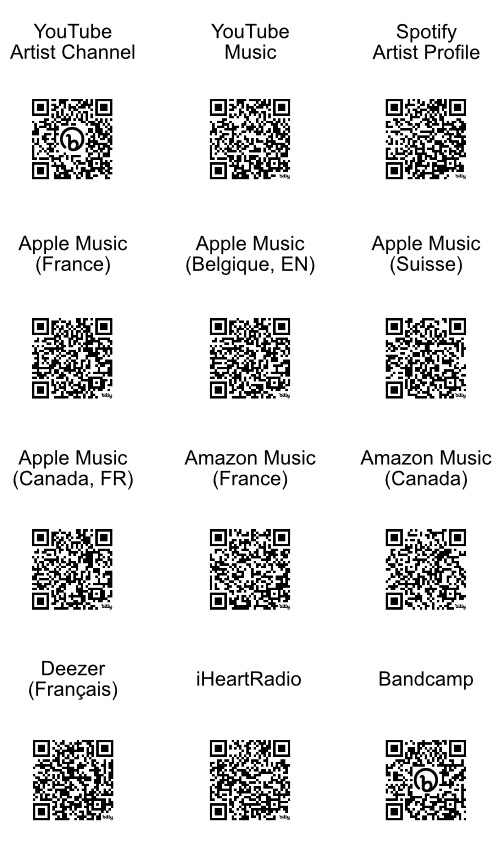SONATINE No. 1
À une nouvelle personne
Un petit mouvement du noyau, comme la souvenir
Il pleuvait des cendres, sur cette village, une certaine quantité
Les cendres comme la souvenir triste, elles faisaient du bruit
Sur des branches des arbres, sur des toits des maisons, continuaient de pleuvoir
Cette nuit, la lune était claire, je et une femme
Bavardaient en nous appuyaient sur une fenêtre (De la fenêtre nous pouvons voir une montagne)
Toute la chambre, comme une gorge, avec la lumière
L’éclat de rire qui résonne bien inondait
— Savoir le cœur d’homme…… Qu’est-ce que le cœur d’homme……
Je, la main de cette femme qui poursuivait un papillon de nuit, au papillon de nuit
Elle essayait de saisir, il était douteuse quoi
Quel jour commençait à remplir de fumée de cendre au sommet
L’histoire du valcan…… et dans quelques nuits, donc à la rêve
Je tissait les histoires de Elisabeth que j’avais elles appris
Encore à une nuit
Nous resterons immobile, dans le brouillard
La brouillard coulera au large, sur la surface de la lune
Effleurera comme un javelot, nous enveloppera
Comme un rideau de cendre
Nous nous séparerons, sans savoir
Sans être sachant, elles rencontraient
Comme les nuages, nous serons oubliées
Comme une veine d’eau
Ce chemin est chemin d’argent, nous iront
Quittant seulement…… (Un personne de un personne
Pourquoi qui se souvenait attendre dans le soir)
Nous ne rencontrons jamais encore une fois, pensant à le passé
Le mirror de lune réfère la nuit
Nous ça répéterons seulement
À la soirée du jour tardif
Il y avait la très grande grande place déjà
Personne ne apercevait pas
Aussi le ciel, aussi les nuages, et aussi les fleurs flottants
Je n’était pas attiré encore
Je teindrait le colour léger du crépuscule
Et ne disais pas il n’est pas agréable déjà
Un jour de un oiseau chantait et passait
Expliquerait seulement l’histoire et le chanson loins
Le chemin sans poteau indicateur qui je venais
Côte du chemin, qu’est-ce que nous suivrons
Nous resterons plantés
Notre rêves circulerons où
Furtifs, mais douloureux
Aussi jour ceci, et jour cela dans la silence sage?
Au matin nous nous quittions
Ébranle, les blanches bleues
Arrache, les fruits bleues
Toi, ce matin était clair au loin
La ville natal que je rentrais, Il y avait quelque part au loin
Tout le monde, était aimable et en extase pour moi maintenant
Elle était plus douce que le souvenir, la silence n’était pas différente un peu
Monotone, et un embrouillent des nuages flottants et le vent
Rester je avais chanté tel quel hier
Le cœur faible, jette
Comme un pépin très jeunot était mâché qui jetait
Ébranle, ébranle
Toi
Des choses variées semblaient moi gentilles et
Je ne pouvais pas m’indigner, avec me mordais les lèvres
Au sentiment dernière
Rêves retournaient toujours, à une village triste sur la montagne
Le vent soufflait le persicaria filiformis
Alouettes ne ses arrêtaient pas à chanter
D’un chemin forestier tout silencieux dans un matin
Le soleil brillait sereinement du ciel bleu, le volcan était endormi
— Et moi
Choses j’avais regardé, iles, vague, caps, et lumières solaire et clair de lune
Je savais que personne ne écoutait pas, mais racontais……
Rêves ne venaient pas plus loin
Toutes les choses, je pensais à oublier
Quand je oubliais, les choses que je oubliais tout entier
Rêves ses glaçaient dans un souvenir du plein hiver
Puis, ils ouvriraient une porte, dans la tranquillité
Et ils partiraient sur le chemin en étant éclairés par des étoiles
Chanson de fleurs d’été
Partie 1
Par entre le ciel et le pâturage, une nuage jaillissait
Sur la surface d’une rivage, l’ombre dessinait
Le fond de l’eau, une poisson
Se touillait, brillait par le soleil
Il était événement d’un jour de l’été!
Un jour, le moment de rêve qui ne revient pas
Nous garderons le silence, nos pieds ses enroulaient autour herbes folles
Deux ombres, étaient secouées rusées en suivant cours
…… Murmure d’un ruisseau
Il n’était pas change de ce jour aussi aujourd’hui
Chuchotait calmement au vent
Le sourire de la jeune fille de ce jour là
Pourquoi, je ne connais pas
Cependant, fermes et froids, il y avaient des profils seulement
Partie 2
Ces jours-là, comme un berger et une jeune fille
Commençait à passer joyeux entiers
Il n’y a pas de évènement particulier
Il n’y a pas de nouvelle confession
Ces jours-là, comme on ne pouvait pas résoudre une énigme
Le sourire, jurait un amour éternel
Se mêlait les fleurs de chardon et de carex
Enfantine, il y avait de bonne rêve– c’était quand!
S’il vous plaît, une fois encore, revenez
Ce jour-là qui le ciel bleu s’courait
Ce jour-là qui ces étoiles du matin scintillaient
Ces jours-là, ces jours-là, revenez
Je, devenais grand, comme déborder
Je, étais triste et tremblais
SONATINE No. 2
L’arc-en-ciel et l’homme et…
Le vent calme après la pluie coulait, ce temps
Une touffe d’herbe se mouillait par la rosée encore, un chapelet de la araignée brillait
Au ciel d’est, un arc-en-ciel léger était apparu
Je me levais en gardant le silence, garder le silence!
Ah toutes les choses sont restées comme ça, toi à ce moment
Tu levais les yeux vers moi, je n’avais pas de chose qui je faisais
(Cependant je t’aimais)
(Cependant tu m’aimais)
Encore le vent soufflait, encore les nuage coulaient
Au ciel bleu clair et chaud, il n’y a pas de changer
Les chansons des oisillons retenaient, les colours des fleurs sentaient
Et aux vos cils, un petit arc-en-ciel restait
(Mais tu ne m’aimais plus
Je te ne t’aimais plus)
Condoléances de l’été
Mes temps décédaient
Qui faisaient mon cœur de l’or, une blessure se guérissait bientôt comme je ne me blessait pas
Entre hier et demain
Le fossé profond du bleu foncé dessinait et passait
La chose qui passait et jetait
Était une petite pièce du papier que une tache de larme apparente
Dans les vagues blanches écumaient, Une soirée
Toutes les chose ses effaçaient complètement! Selon le scénario prévu
Ensuite, je devenais une voyageur, quelles années ont passé
Des villages étaient éclairées par le clair de lune
C’était chaud, à la campagne sèche
Si je me souvenais! Je revenais une fois encore
Où? à la place (Je avais cette mémoire
J’attendais, à elle, et renonçais silencieux)
J’oubliais malgré moi
L’autumn dur était arrivé! (inclus le printemps)
Le lac était éclat par le soleil et brillait
Des oiseaux volaient sur le grand grand ciel
Et allaient sur le flanc de un montagne à une gorge
Le raisin et la figue sont mûrissaient opulentes
La moisson des céréales avait commencé déjà
Une ou deux nuages coulaient
Étaient comme ses allongeaient sur une herbe en regardant
Moi, seulement, on m’a laissé seul
Mes yeux étaient trop éclats pour voir la décadence
Mais ces yeux étaient petits qui ne pouvaient pas la fête de temps!
L’état restait, l’hiver doux circulait
Dans un jour le vent dispersait des feuilles– je croissais aussi
De, un sens paisible qui une musique silencieuse correspondait
Liste des traductions de la poésie
(Français, English, Español, Italiano, Deutsch)

